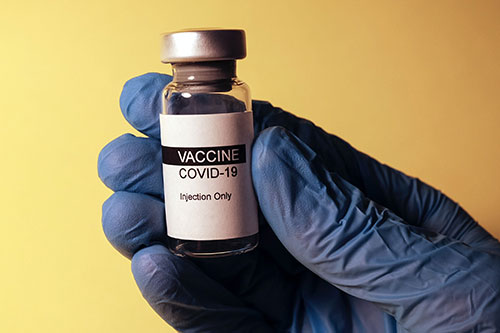Wednesday February 3rd 2021

NHS Lothian chiefs say there will be ‘lessons learned’ over the region’s vaccination programme – although concerns remain over vague government advice, workforce numbers and the availability of vaccine supplies.
Weekly figures compiled by Public Health Scotland each Monday have again shown that NHS Lothian has the lowest vaccination rate in the country, with 10.6% (80,066) of residents receiving their first dose.
At a meeting of the NHS Lothian’s board committee today, Colin Briggs, director of strategic planning, gave an update on the latest figures.
As of yesterday evening, NHS Lothian has vaccinated 55,845 in its mass vaccination centres and local clinics, and a further 33,325 in GP surgeries, for a total of 89,170.
Unlike many other health boards in Scotland, NHS Lothian is vaccinating over 75s, as well as ‘clinically extremely vulnerable’ individuals, in GP surgeries, and this has led to a slower rollout for this age group.
According to Mr Briggs, 27,721 (92%) of the region’s 30,546 over-80s have had their first dose of the vaccine, and 5,604 of the 26,718 75 to 79-year-olds have received jags.
In care homes, Mr Briggs said 92% of the region’s 4,796 care home residents have been vaccinated, 7% could not be vaccinated as a result of testing positive for coronavirus and a further 1% have refused the vaccine.
In terms of staff, the health board has vaccinated 42,756 employees, however, there has been some confusion in NHS Lothian regarding who counts as staff.
As revealed exclusively by the Local Democracy Reporting Service, NHS Lothian has been offering jags to food bank volunteers, who may not be considered frontline health and social care staff.
Mr Briggs told the health board meeting: “The definition of staff is a broad one, I think we could say at this point, and we are seeking greater clarity from Scottish Government colleagues about the granularity around all of that, because it is very very difficult to make reasonable assumptions around what is included or not – but that 42,000 figure that I’ve just given includes nearly 5,000 care home staff and 6,000 or so social care home workers. Those are very good things.
“The biggest issues that need to be flagged up at the moment is the pace at which this is moving, and the need to be very clear on who exactly is going to be vaccinated and in what order.”
Mr Briggs also said workforce problems, and issues with the supply of the vaccine, have prevented some of the mass vaccination centres opening immediately.
He continued: “The challenge that we have is getting people to put jabs into people’s arms and to do that at that rate, so it’s a phased opening of the mass vaccination centres, based on the fact we actually need the people to do the jabbing.
“That though is secondary, as vaccine supply is extremely constrained and until we actually have that in our proverbial hands it can be very very difficult to go ahead and plan these sorts of things, particularly when literally the whole world wants access to these vaccines.
“My understanding is that GP practices are working together, but there is difficulty surrounding when the vaccine actually arrives – people can be willing to help all they want, but if we don’t have the vaccine to be able to put it into people’s arms then that’s a challenge for us, and a challenge across the world.”
NHS Lothian’s chief executive, Calum Campbell, said the health board has recently decided to define frontline health and social care staff itself.
He told the meeting: “I should emphasise that the guidance we’ve got from the Scottish Government about who counts as staff, is very broad – and different health boards have interpreted that in different ways.
“Colleagues will be aware we were recently on the front page of the Edinburgh Evening News because food bank volunteers had been told they could have the vaccine, and that raised some comment, obviously.
“When you look at that guidance, it is very broad and it would be easy to put a large chunk of the population in there, so this week we have developed our own principles and we’re keen to get them agreed with chief executives and local authorities this week so there’s a common understanding.”
When asked by board members about the difference between national and local messaging, and the confusion this has brought, Mr Campbell said: “All we can say at this point is that the challenge is fair, we need to get through this and say what works – we’ll keep it – and what didn’t work – we’ll improve it.
“So there are challenges and glitches and we have to accept that, what I would say is we have to try and stick to the plan as best we can, the fewer changes we make mid-stream – there are so many moving parts to this we’re trying to keep as standardised approach as we can, but yes I think there’ll be lots of lessons learned.”
Tweet Share on Facebook